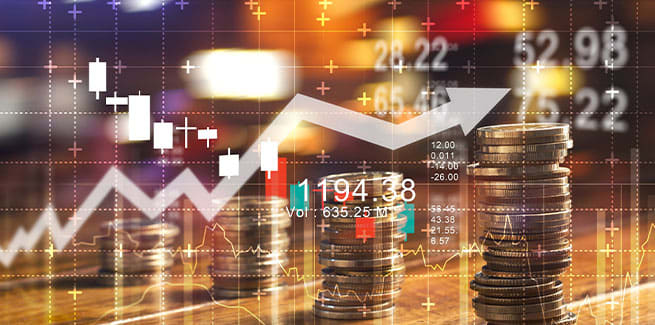Invest
The risky side of ETFs
Exchange traded funds, or ETFs as they’re more commonly known, are becoming increasingly popular among SMSF trustees and investors looking to diversify, but financial consultancy Organic Financial Group cautions these products can have “significant weaknesses”.
The risky side of ETFs
Exchange traded funds, or ETFs as they’re more commonly known, are becoming increasingly popular among SMSF trustees and investors looking to diversify, but financial consultancy Organic Financial Group cautions these products can have “significant weaknesses”.

Speaking to Nest Egg’s sister site InvestorDaily, Organic Financial Group’s founder Gary Norden said ETFs have “never been tested in a difficult environment”, and changes in the market environment could have serious implications for ETF investors.
“The last few years have been very benign for markets, and we know from people we’re talking to in the industry ... a lot of the testing of these products is really going on in that benign market,” Mr Norden said.
“You could have ETFs on the S&P 500 that are constructed completely differently. We’ve seen that, we’ve seen some that are constructed with an almost opposite view to another one. Those kinds of things we find interesting because they open up vulnerabilities.”
One reason this can happen, Mr Norden said, is because some ETF providers “make short cuts” in order to offer a low-cost product.

“For example, ETFs on S&P 500 in the US, many of them will not absolutely buy the 500 stocks and weight them as they should be in the S&P 500,” he said.
“Different styles of ETF are constructing their portfolios to mirror the S&P 500 in different ways. The people buying those ETFs are probably not aware of that they’re buying an S&P 500 ETF. It’s mirroring the returns, but people think they’re matching the market.”
This isn’t to say ETFs are risky products or they don’t have benefits. They have a number of benefits, but many investors aren’t thinking deeply [about] the structure and risks associated with the product, Mr Norden said.
“Any market that grows as large as quickly as the ETF market has should be constantly tested, but it’s hard because the industry generates a lot of revenue,” he said.
“It’s important that when people look at the benefits of ETFs, and there are benefits, but you’ve got to be looking at the long-term sustainability of the product – does it work in every market condition? How does it react?”

Mutual funds
EIF and NATO Innovation Fund partner to boost European defence and security investment
The European Investment Fund (EIF) and NATO Innovation Fund (NIF) have signed a Memorandum of Understanding to collaborate on expanding funding for start-ups, SMEs and midcaps in Europe's defence, ...Read more

Mutual funds
Fund managers brace for regulatory challenges as outsourcing and innovation take centre stage
As regulatory complexities continue to mount, fund managers are increasingly turning to outsourcing and prioritising innovation to navigate the challenging landscape, according to a new study by Carne ...Read more

Mutual funds
New report highlights rising anti-money laundering risks and need for three lines of defence
A new report published by Ocorian and Newgate Compliance has warned that rising anti-money laundering (AML) risks are increasing the pressure for alternative fund managers to have three lines of ...Read more

Mutual funds
Centuria capitalises on non-core diversities with a new $50 million fund
The Centuria Capital Group, an established Australasian real estate fund manager, has successfully raised $50 million in equity from its network of Australian wholesale investors. Read more

Mutual funds
New study shows fund managers are eyeing overseas markets for capital growth
A recent study conducted by Carne Group, a prominent figure in the fund regulation and governance solutions sector for the asset management industry, has highlighted a significant shift in the ...Read more

Mutual funds
Equity Trustees reports robust performance with significant revenue and profit growth
Equity Trustees has witnessed a noteworthy advancement in its financial standing, marked by substantial increases in revenue and funds under management, administration, and supervision (FUMAS), ...Read more

Mutual funds
Micro-investing: Is it worth it?
Investing can be complex. It involves making financial decisions on how your money is going to be invested and managed over time, as well as figuring out the right strategy for each investment. There ...Read more

Mutual funds
RAIZ v Spaceship: Which is better value?
Raiz and Spaceship have become the two biggest apps in the micro-investing space, but which offers a better deal for Aussie investors looking for a hands-off savings strategy? Read more

Mutual funds
EIF and NATO Innovation Fund partner to boost European defence and security investment
The European Investment Fund (EIF) and NATO Innovation Fund (NIF) have signed a Memorandum of Understanding to collaborate on expanding funding for start-ups, SMEs and midcaps in Europe's defence, ...Read more

Mutual funds
Fund managers brace for regulatory challenges as outsourcing and innovation take centre stage
As regulatory complexities continue to mount, fund managers are increasingly turning to outsourcing and prioritising innovation to navigate the challenging landscape, according to a new study by Carne ...Read more

Mutual funds
New report highlights rising anti-money laundering risks and need for three lines of defence
A new report published by Ocorian and Newgate Compliance has warned that rising anti-money laundering (AML) risks are increasing the pressure for alternative fund managers to have three lines of ...Read more

Mutual funds
Centuria capitalises on non-core diversities with a new $50 million fund
The Centuria Capital Group, an established Australasian real estate fund manager, has successfully raised $50 million in equity from its network of Australian wholesale investors. Read more

Mutual funds
New study shows fund managers are eyeing overseas markets for capital growth
A recent study conducted by Carne Group, a prominent figure in the fund regulation and governance solutions sector for the asset management industry, has highlighted a significant shift in the ...Read more

Mutual funds
Equity Trustees reports robust performance with significant revenue and profit growth
Equity Trustees has witnessed a noteworthy advancement in its financial standing, marked by substantial increases in revenue and funds under management, administration, and supervision (FUMAS), ...Read more

Mutual funds
Micro-investing: Is it worth it?
Investing can be complex. It involves making financial decisions on how your money is going to be invested and managed over time, as well as figuring out the right strategy for each investment. There ...Read more

Mutual funds
RAIZ v Spaceship: Which is better value?
Raiz and Spaceship have become the two biggest apps in the micro-investing space, but which offers a better deal for Aussie investors looking for a hands-off savings strategy? Read more








